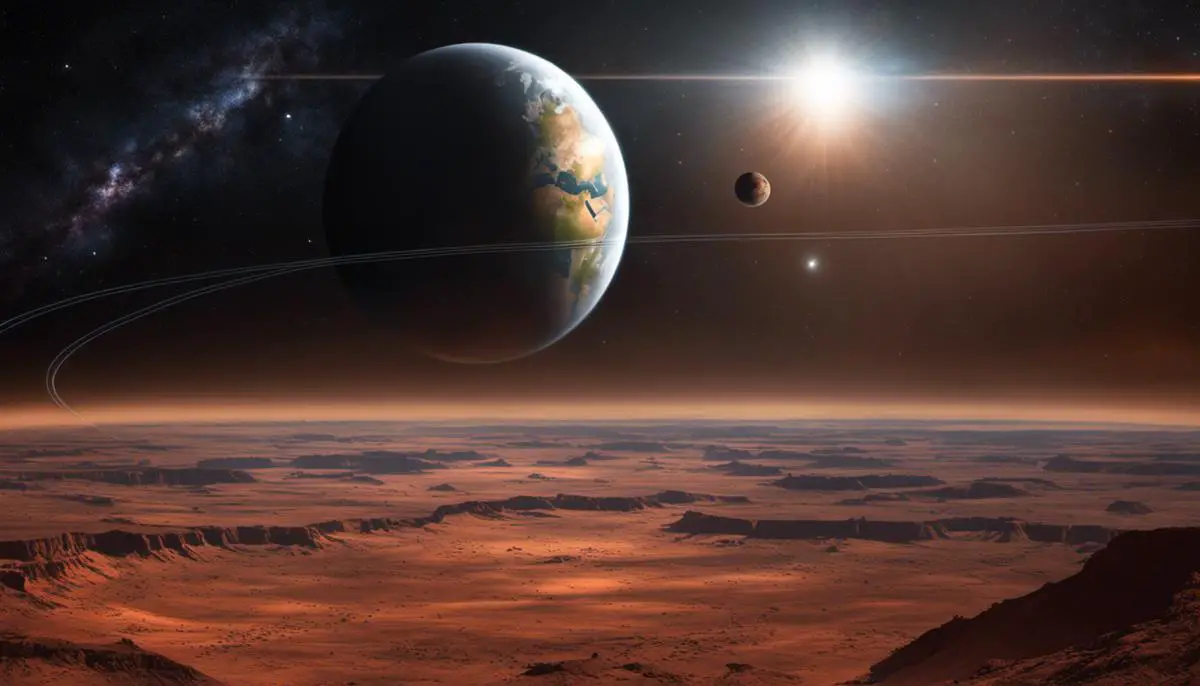As the neighboring planet that bears the closest resemblance to Earth, Mars has long captivated human imagination and aspiration of extraterrestrial exploration. The journey to Mars, however, is a formidable undertaking, spanning millions of miles through the cold and unforgiving emptiness of space. This expanse is not just a physical distance, but a chasm bristling with challenges and unknown threats that our current technology and understanding are striving to overcome. To appreciate the complexity and magnitude of this endeavor, a thorough exploration of a range of topics from understanding the spatial distances, spacecraft technology, the journey itself, and the prospects of landing and returning from Mars are required.
Understanding the Distances in Space
Understanding the Distances in Space
Knowing the distance between Earth and Mars is more complicated than it might seem, due to the fact that both Earth and Mars have elliptical (oval-shaped), not perfect circle, orbits. Consequently, the distance between them varies drastically as each planet travels around the Sun.
On average, the distance from Earth to Mars is about 140 million miles, or 225 million kilometers. However, when the two planets are at opposition, that is, when Earth and Mars are at opposite sides of the Sun, the distance can increase to about 250 million miles, or 401 million kilometers. Conversely, when both planets are at their closest point to each other, known as opposition, the distance shrinks to just around 34 million miles, or 55 million kilometers.
Relatable Distance Measurements
Understanding these astronomical distances can be challenging. For relative understanding, the 140 million miles average can be viewed as 300,000 trips around Earth, or approximately 600 times the distance to the Moon. At their closest, Mars would be 143 times the moon’s distance, while at the farthest, it would be almost 1,044 times further away than the moon.
Navigating Space: The Earth to Mars Journey
The journey from Earth to Mars poses numerous decisive challenges that influence mission planning, largely due to the variability of their relative distances. To optimize journey time, spacecraft must be launched when the planets align perfectly, a condition known as the ‘launch window’, which happens only once every 26 months. Miss this window and a patient wait for the next alignment becomes inevitable.
The duration of a trip to Mars commutes between six to nine months, and it depends on the speed of the launch, the position of the planets, and the path that the spacecraft has to carve out to reach Mars. This path, commonly referred to as the Hohmann Transfer Orbit, is a model for the most energy-efficient trajectory between two planets, such as Earth and Mars.
Looming challenges triggered by the humongous distance and the extensive time required to traverse space affect astronauts’ health, demand resilient life support systems, manipulate the spacecraft’s weight, and cause communication delays. Contingency plans for such situations form a significant layer in the mission preparation for Mars.
The vastness of the space separating Earth and Mars underlines the tremendous feats of engineering that bring interplanetary missions to fruition. Despite the magnitude of the challenges and the scale of the distances, with strategic timing and meticulous planning, these missions continue to shrink the gap between Earth and Mars.
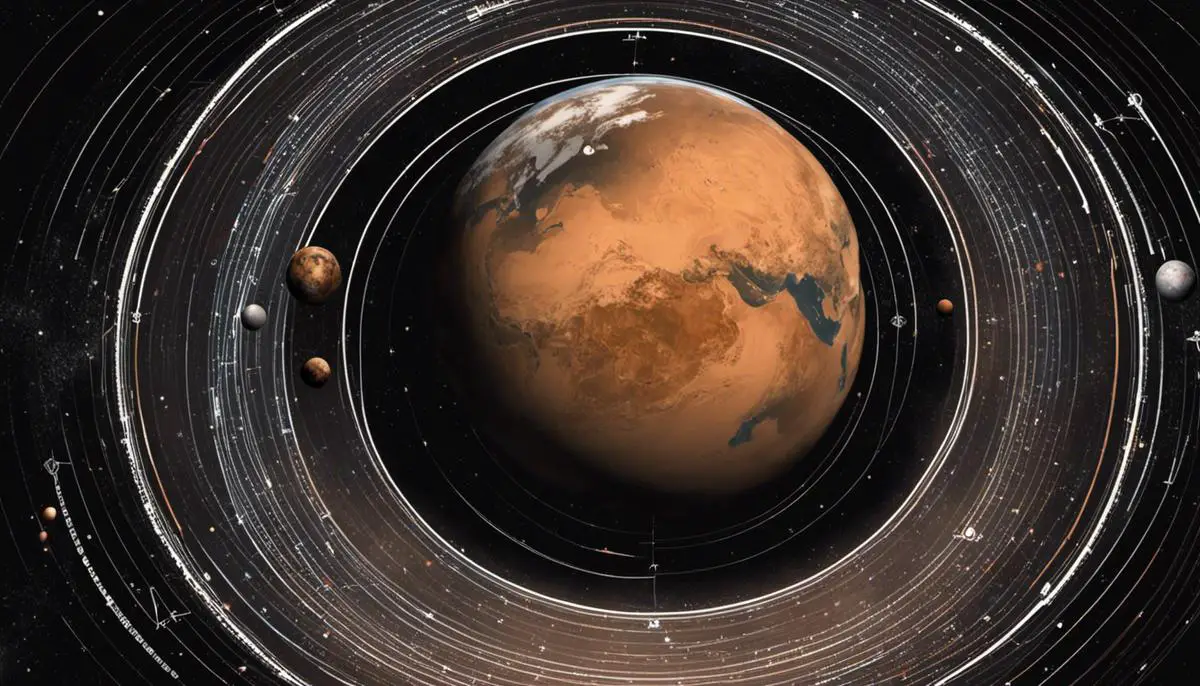
Current Spacecraft Technology and Limitations
The Genesis of Modern Spacecraft: An Engineering Feast
No doubt, the linchpin in this epic voyage from Earth to Mars is the spacecraft. At present, the leading-edge spacecraft crafted for interplanetary travel consists of multiple specialized modules. These distinct modules cater to propulsion and power, life support, and communication and navigation operations. The materials selected to forge these crafts are typically light-weight metals like titanium and aluminum with high resistance to heat, signifying their remarkable endurance and performance.
The Propulsion System and Power Modules
The propulsion system and power modules onboard govern the spacecraft’s movement. Rockets outfitted with powerful engines utilize the principle of trajectory insertion and course correction maneuvers to propel the spacecraft out of Earth’s atmosphere and navigate through space. The power modules typically use solar panels to fuel the systems onboard, although nuclear power is also a consideration for upcoming missions.
The Life-Support Systems
The life-support systems are designed to create a habitable environment inside the craft. They manage air supply, waste, temperature regulation, and the provision of food and water for the astronauts over extended periods of space travel, such as a journey to Mars.
Reliable Communication and Navigation Systems
Reliable communication and navigation systems are also vital, ensuring astronauts can maintain contact with mission control and navigate correctly. Technological advancements have led to the development of spacecraft navigation systems like celestial navigation, which uses star tracking, and inertial navigation, which gauges velocity and direction.
Challenges and Limitations of Current Spacecraft Technology
While current technology does allow for interplanetary travel, many limitations and challenges become evident, particularly as the journey lengthens. Long trips, such as a journey to Mars, strain the life-support systems. Water and food supplies may fall short, waste management can become complex, and the threat of equipment failure remains.
The limitations of power systems also become apparent on long hauls. While solar power performs well enough close to the sun, it becomes less efficient as distances increase. This practical energy limitation curbs the range and duration of missions.
Spacecraft are also exposed to extreme temperatures, high-energy solar particles, and cosmic radiation, all of which put immense strain on both the materials of the spacecraft itself and the occupants on board. Protection from these harms is still a significant challenge that impacts the sustainability of long duration space travel.
One of the biggest hurdles faced by space flights is time. Even at optimal alignment, a one-way trip to Mars using current technology would take approximately six to nine months. Extensive space travel like this leads to numerous health risks for astronauts, including muscle loss, weakening bones, and negative psychological effects due to isolation.
Future Advances in Spacecraft Technology
The journey to Mars poses a multitude of challenges, as navigating between Earth and Mars involves overcoming significant obstacles, such as adverse radiation exposure and extreme temperatures. However, scientists and engineers are continuously working toward developing innovative solutions through technological advancements, promising a brighter future for space exploration.
One notable example is NASA’s Mars 2020 mission, which launched the Perseverance Rover using a powered descent stage, enabling control at lower altitudes and more precise landings. This mission’s success expands future exploration opportunities by providing more extensive access to diverse geological regions on Mars.
Furthermore, groundbreaking progress in propulsion technology, such as nuclear thermal propulsion – a revolutionary concept which uses heated nuclear reactors for thrust – could potentially halve the travel time to Mars. Concurrent advancements in protective systems are focused on creating superior shielding materials to guard against radiation and introducing novel thermal control technologies to withstand extreme temperatures. Likewise, life-support systems are being refined, enhancing their efficiency and compactness to sustain larger crews on more prolonged missions.
While the journey from Earth to Mars at present seems daunting, the continuous advancements in technology, coupled with our growing understanding of space travel complexities, propel us closer to successful interplanetary travel and further our ability to explore the cosmos.
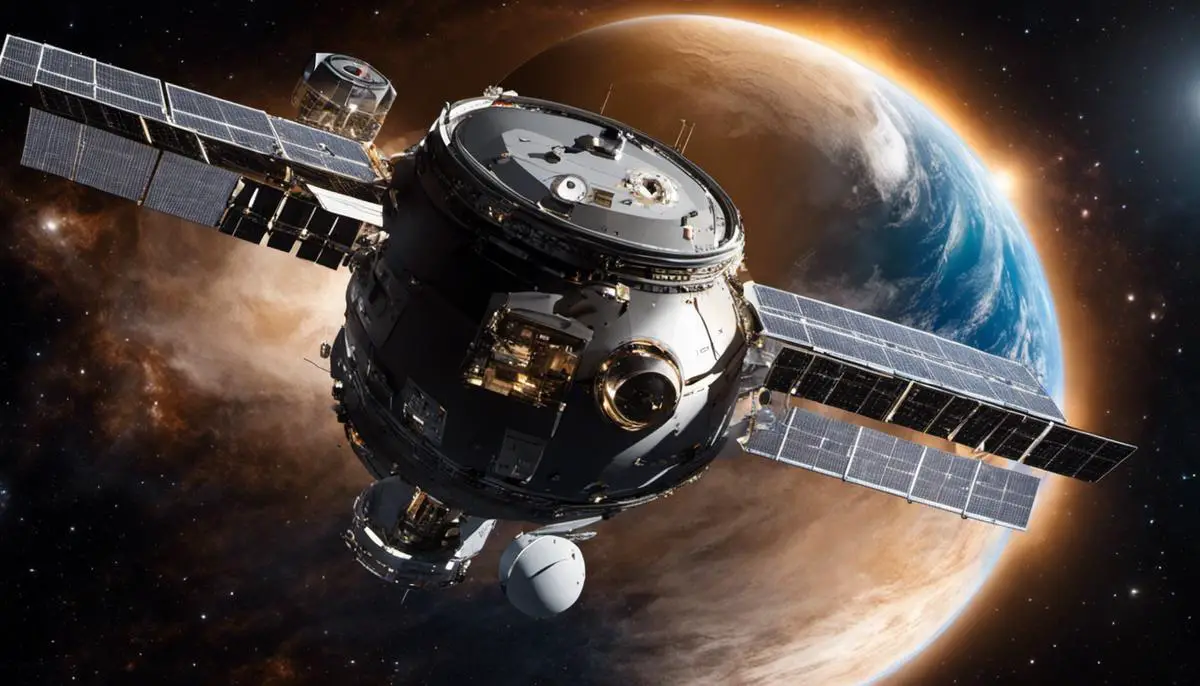
The Journey: Navigation, Duration, and Challenges
Navigating the Journey from Earth to Mars
The flight path between Earth and Mars is far from straightforward. Rather than a direct line, spacecraft follow an elliptical pattern termed a Hohmann transfer orbit, named after the German scientist who first proposed the concept. This journey involves the spacecraft leaving Earth’s orbit at a faster speed than Earth’s revolution around the Sun, gradually catching up to Mars, and ultimately being pulled into its orbit. This trajectory is meticulously calculated and timed, designed to ensure optimal fuel-efficiency. This, combined with new technological advancements, helps meet our objective of safely reaching Mars, thus further advancing our systematic exploration of space.
Duration of the Journey
The duration of the journey primarily depends on the alignment of Earth and Mars in their respective orbits. Mars and Earth align in a favorable position once every 26 months, known as an ‘opposition’, which is the best time to make a trip. Typically, the journey to Mars takes around 6-9 months. However, the exact duration may vary based on the spacecraft’s speed, the specific planetary alignment at the time of launch, and the exact positioning of the intended landing site on Mars.
Health Risks for Astronauts
The journey from Earth to Mars presents a raft of health challenges for astronauts. One of the primary concerns is exposure to space radiation, which can increase the risk of cancer and other detrimental health conditions. Microgravity also poses numerous health risks, such as muscles and bone density loss, vision impairment, and psychological effects of isolation and confinement. Therefore, ensuring both physical health and mental well-being is an absolute necessity for such a long duration mission.
Communication Delays
The distance between Earth and Mars can range from 34 million miles to 250 million miles, depending on their relative positions in orbit. Radio signals, even traveling at the speed of light, take a significant amount of time to travel this distance. This delay in communication, which can vary from 4 to 24 minutes one way, adds complexity to operating rovers and other equipment remotely. It also poses considerable challenges in coping with emergency situations that may require immediate response.
Technical Malfunctions
During the long and arduous journey, technical malfunctions can occur in any of the sophisticated systems, subsystems, or instruments aboard the spacecraft. Since repair is not an option, spacecraft headed to Mars are equipped with redundant systems to minimize risk. Nevertheless, the possibilities of technical glitches, failures in life support systems, or navigation errors pose persistent threats to the mission.
The Ordeal of Mars’ Inclement Environment
Mars’ inhospitable landscape creates major barriers for astronauts who make the journey from Earth. The planet is notorious for its severe temperature fluctuations, hazardous terrain, dust storms, and a predominantly carbon dioxide atmosphere which is significantly thinner than that of our home planet. These conditions not only make landing a daunting task but also demand thoughtful planning, modern technology usage, and innovative strategies to assure the success of such missions.
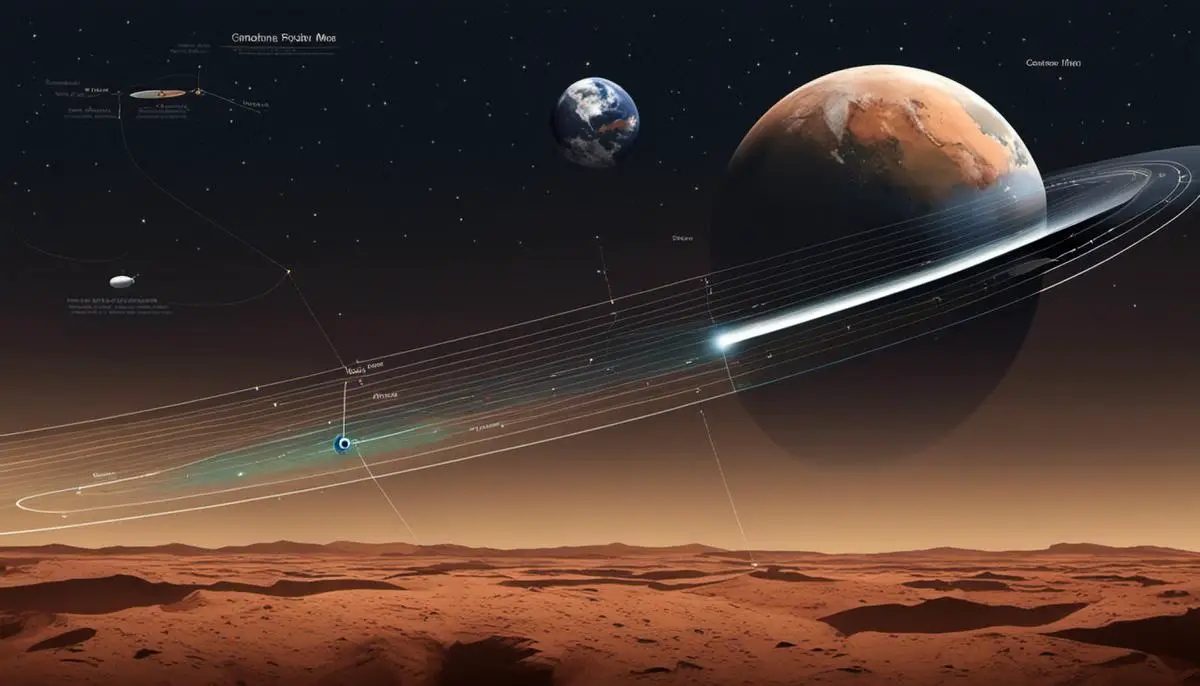
Mars Landing and Return Journey
Mars Landing: Navigating Through Technical and Environmental Obstacles
Landing a spacecraft on Mars is quite an engineering feat, beleaguered by numerous distinctive challenges. The red planet’s thinner, carbon dioxide-rich atmosphere hampers deceleration of the spacecraft and reduces the friction required for a safe landing. This necessitates creative technologies such as parachutes, retrorockets and airbag cushioning mechanisms to land payloads without incident.
Mars’s surface is rife with dangers such as large rocky expanses, towering mountains, and unpredictable dust storms which could jeopardize landing maneuvers. To circumvent these hindrances, NASA developed innovative tactics like the “sky crane” employed in the landing of the Curiosity Rover. This method uses retrorockets for hovering and gently places rovers on the ground using wires.
Initiatives like Mars One are exploring terraforming methods to render Mars habitable for humans. Their plans involve utilizing the planet’s existing resources such as polar ice caps and modifying the atmosphere. Permanent inhabitants would employ in situ resource utilization techniques to draw out and convert these resources into breathable air, potable water, and even rocket fuel for return voyages.
Physiological Considerations for Astronauts on Mars
The long journey between Earth and Mars, lasting anywhere from six to nine months, and surface habitation pose significant physiological challenges to astronauts. The prolonged exposure to microgravity during the journey can cause muscle atrophy and bone demineralization, fatigue, balance disorders, and changes to cardiovascular, neurovestibular, and immune systems.
On Mars, the lower gravity – about 38% of Earth’s – has unknown long-term effects on human health. The thin atmosphere, consisting of 95% carbon dioxide, is incapable of supporting human life without life-supporting technology. Astronauts have to rely on spacesuits to provide breathable air, and habitats with controlled environments.
Radiation is another risk, both en route and on the surface of Mars, as astronauts are exposed to harmful cosmic rays and solar particle events. Enhanced shielding technologies and medical countermeasures are under development to minimize this risk.
Return Journey: Delivering astronauts back to Earth
Astronauts’ return to Earth after a Mars mission involves considerable technical complexities. The launch from Mars is a key challenge. The spacecraft must be able to lift off from the Martian surface, a task requiring significant fuel reserves and robust launch systems.
Because Mars lacks the dense atmosphere that aids spacecraft re-entry on Earth, a departing spacecraft must tackle the velocity change, or “delta-v,” to break free from the Martian gravity field. Current thoughts involve making rocket fuel on Mars to overcome the weight limitation of carrying return fuel for the entire journey.
Once the spacecraft crosses the vast distance back to Earth – a mission phase with risks similar to the outbound journey – it must survive the re-entry into Earth’s atmosphere. Astronauts will face g-forces and heat from the atmospheric friction before parachutes deploy to slow the descent, culminating with a splashdown or touchdown.
Overall, the journey between Earth and Mars is a multi-faceted scientific and engineering challenge that pushes the limits of human innovation and endurance.
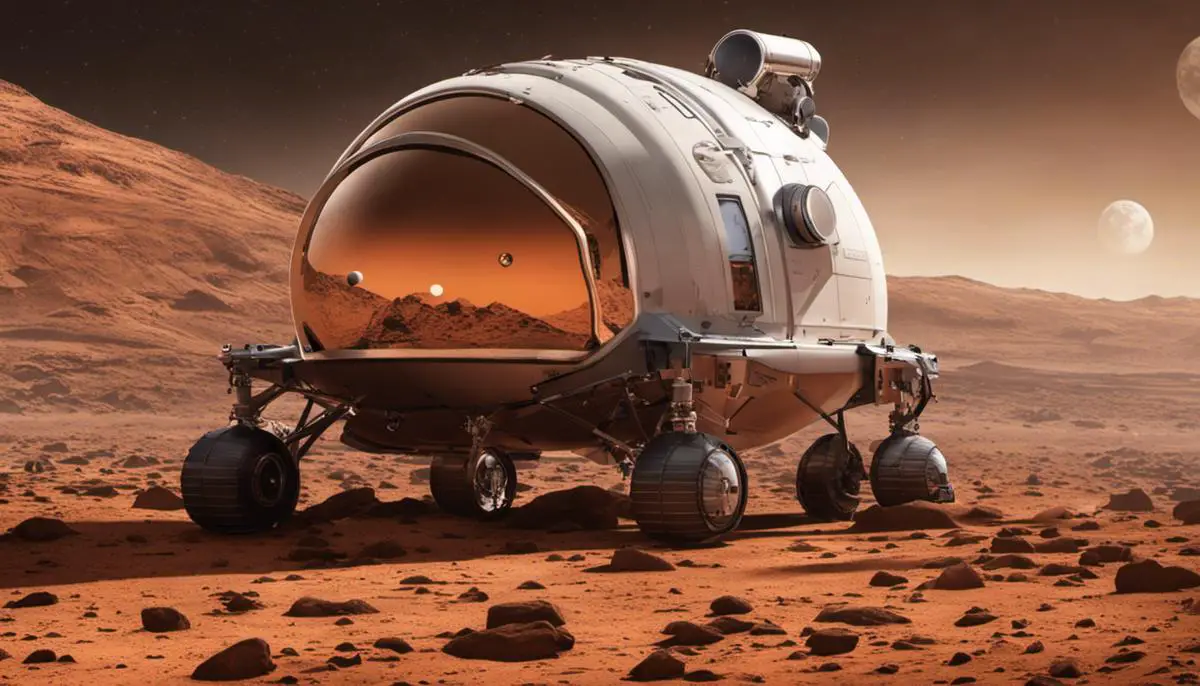
With the constantly evolving landscape of human knowledge and technology, the notion of landing on Mars and returning safely is growing increasingly within our reach. As we push the boundaries of our technological capability, we inch closer to unraveling the mysteries of Mars, transforming science fiction into science fact. The journey to this enigmatic planet is undeniably an epic spectacle of human ingenuity and exploration. By understanding the distances in space, the technology forged and utilized, the journey traversed, the challenges met, and the plans for landing and returning, we can gain a more comprehensive grasp on the audacious pursuit of setting footsteps on Martian soil.
![]()
